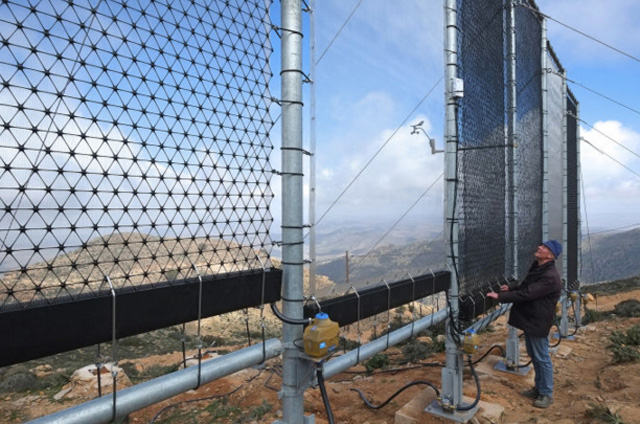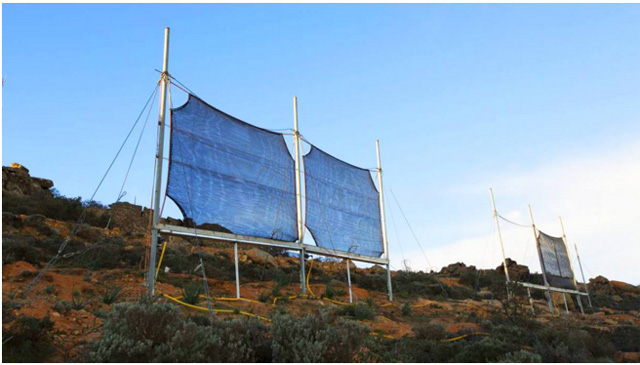Fog harvesting is effective technology that pulls water from the air for drinking and irrigation purposes.
Fog harvesting is becoming a popular strategy to procure water. Why? Because it’s incredibly efficient at pulling aqua from the air, and also because water shortage is a very real concern in many corners of the world.
According to the World Health Organization, approximately 1.8 billion people drink contaminated water. And, in areas like Chile, Yemen, and Morocco, where climate change has worsened drought, farmers are having difficulty watering their crops.
A solution to both travesties appears to be fog harvesting.
Reportedly, the process involves the construction of a mesh net on an elevated piece of land which is embedded by fog. When the water in the fog catches on the mesh of the net, it eventually condenses into pure, liquid water. Then, it drips down into a waiting collector.

Credit: MIT
Thanks to recent advancements in the netting material, one 4 x 10-meter net can harvest 66 gallons of water a day!Gareth McKinley of MIT told NewsScientist that the technology is sure to take off in the near future.
“You could imagine fog catchers like wind farms, 20 or 100 of them up on a hillside. Anywhere you can build a billboard or a cell tower on a hillside, you should build a fog catcher. They’re modular, they’re scalable and you don’t need to plug them into the grid. Nature does all the work,” he said.
Related: 100-Year-Old Way to Filter Rainwater in a Barrel
Furthermore, the design paper at MIT states that “fog represents a large untapped source of potable water” and by mimicking natural water condensers we can tap into it. The recent breakthrough advances the netting by creating a different shaped surface that has better “wettability.”
Already, fog harvesting is being used in multiple countries to provide water for drinking and crop irrigation in parched regions.





